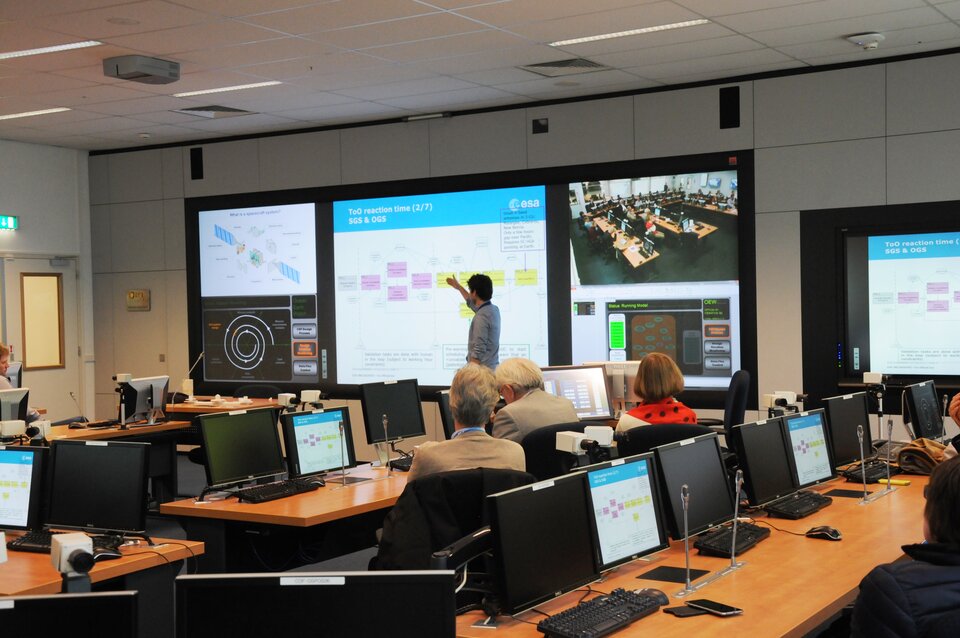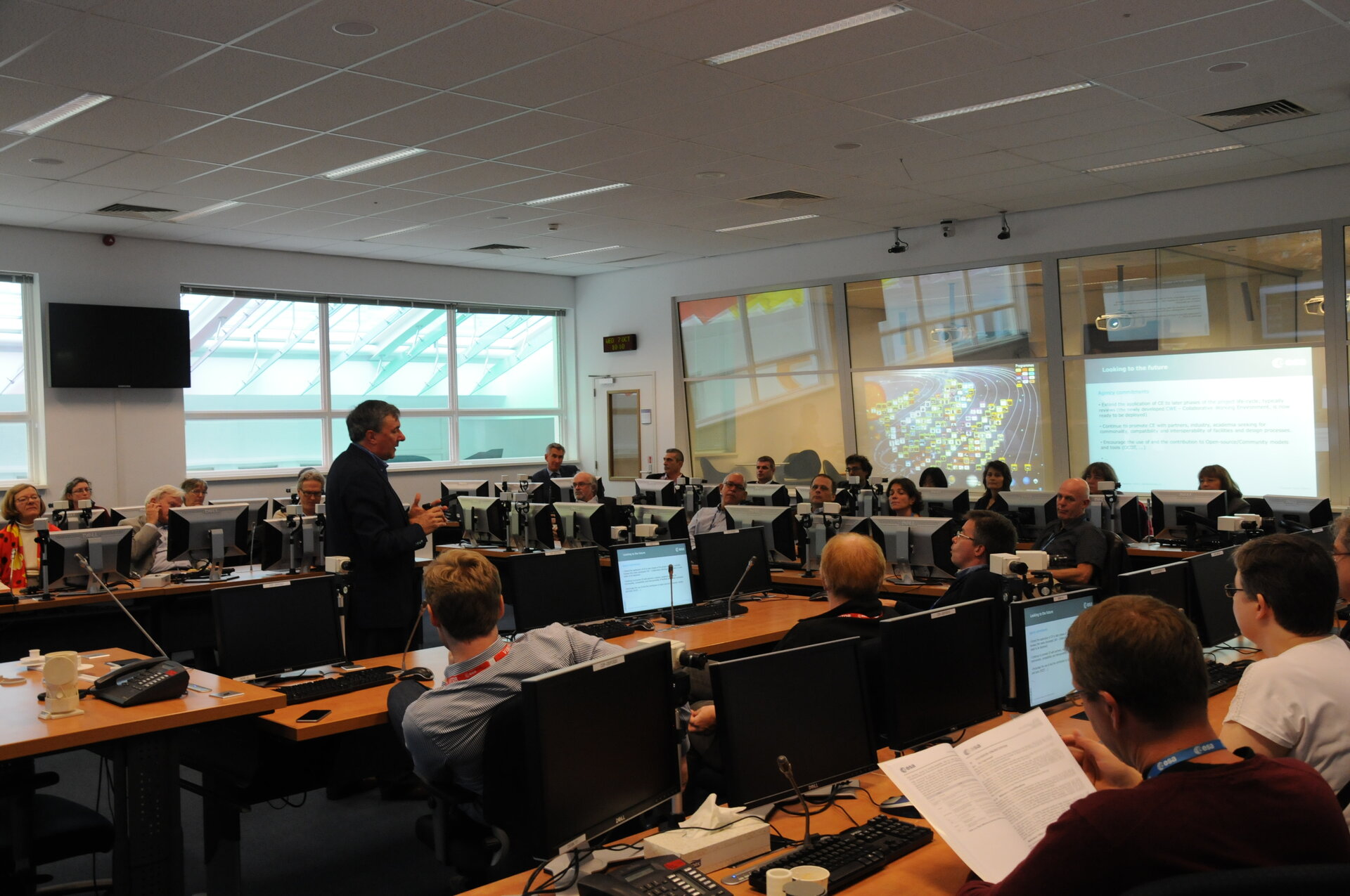Members of the Scientific Advisory Group Visit the CDF
Members of the Scientific Advisory Groups AWG and SSEWG recently visited the CDF as part of a tour of ESTEC.
The Astronomy and Solar System and Exploration Working Groups (AWG and SSEWG) provide scientific advice in their subject areas mainly to the Director of Science and Robotic Exploration through the Space Sciences Advisory Committee (SSAC).
The working group members are scientists from the ESA Member States with expertise in the specific disciplines covered by the working groups.
http://www.cosmos.esa.int/science-advisory-structure
These groups often receive and read reports about future scientific missions, based also on studies undertaken in the CDF. However, in many cases, they have not taken direct part in the CDF activities.
Visiting the facility was useful for them to appreciate the approach and understand the philosophy and the utility to have CDF studies, in particular in preparation for future for scientific missions
Massimo Bandecchi presented the CDF and concurrent engineering, while Ivo Ferreira gave a presentation particularly related to the types of scenarios and trade-offs faced when trying to reconcile scientific requirements with the engineering cost and programmatic constraints related to real missions. This was well received by the visitors and numerous questions were asked about both the processes and the roles of the participants.

The visit will help these essential ESA advisers to better understand the sequence of events in the study and development of future scientific missions and also to appreciate the importance of preliminary assessment of mission concepts through the CDF study.
From an ESA perspective it is important to show the role of the CDF in the mission selection process and how it can be instrumental in maturing mission concepts, helping create realistic mission and system requirements as well as providing industry with a clear and unambiguous starting point for future studies.
Comments received were all positive and demonstrated that the original objective to inform them better on how the CDF is used and what is its relevance in mission studies was achieved















 Germany
Germany
 Austria
Austria
 Belgium
Belgium
 Denmark
Denmark
 Spain
Spain
 Estonia
Estonia
 Finland
Finland
 France
France
 Greece
Greece
 Hungary
Hungary
 Ireland
Ireland
 Italy
Italy
 Luxembourg
Luxembourg
 Norway
Norway
 The Netherlands
The Netherlands
 Poland
Poland
 Portugal
Portugal
 Czechia
Czechia
 Romania
Romania
 United Kingdom
United Kingdom
 Slovenia
Slovenia
 Sweden
Sweden
 Switzerland
Switzerland


























